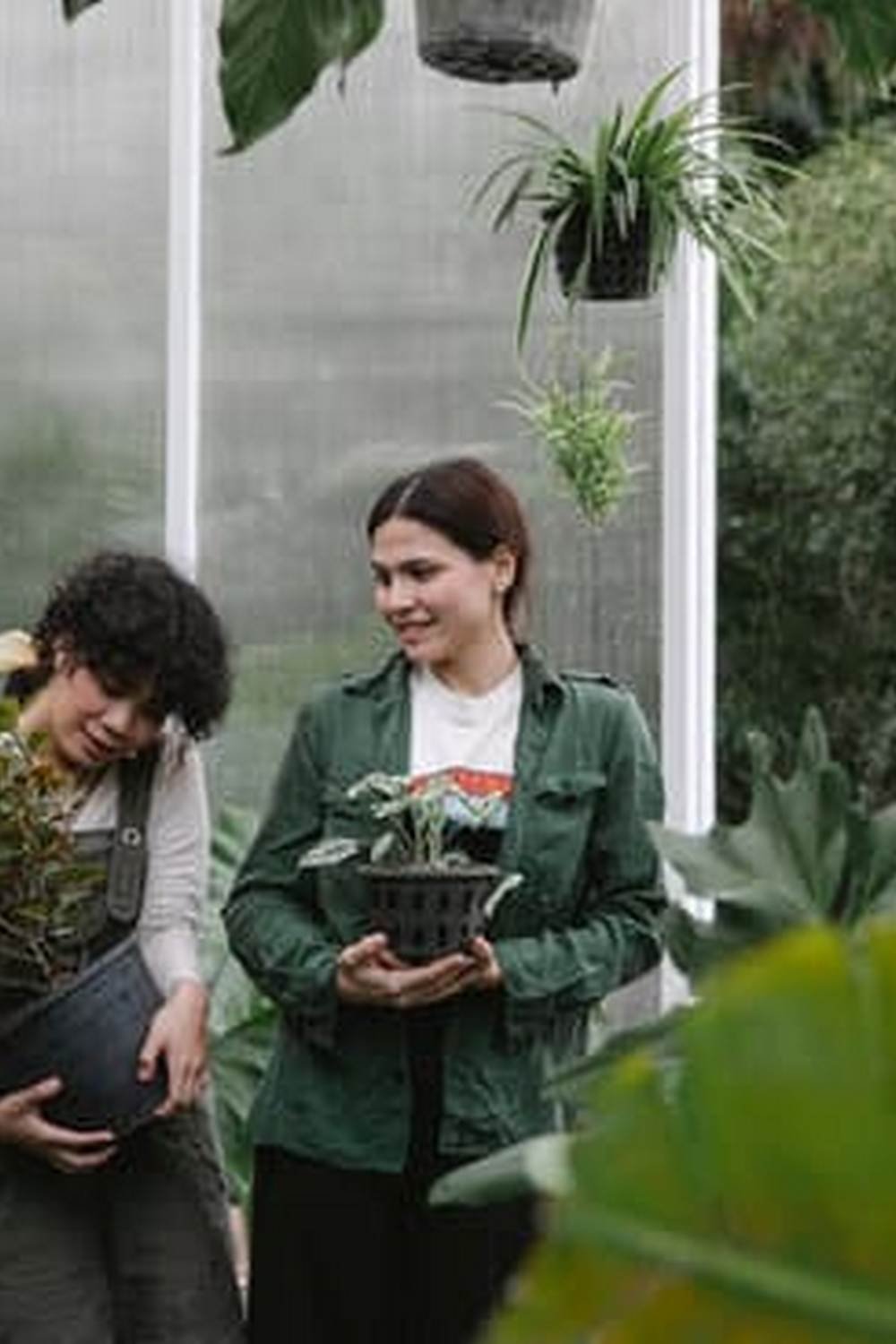Introduction
A home hydroponic vegetable garden can be a great way to grow your own food from the convenience of your own home. With no soil required, these gardens are easier to manage and maintain than traditional garden plots. Hydroponics is an alternative method of growing plants that uses mineral nutrient solutions in a water solvent, instead of relying on soil for nutrients. This system has been around since ancient times but is becoming increasingly popular for modern-day sustainable agricultural practices.
The advantages of using hydroponic systems are numerous, starting with the lack of soil required. As hydroponic systems are not reliant on dirt or soil, they can be set up indoors – even in smaller spaces like balconies or terraces – where it is difficult to cultivate a traditional garden. The benefit of this is that the resulting vegetable yields can be enjoyed year-round and it eliminates the mess and work associated with outdoor gardening. Additionally, since all essential nutrients are provided within one solution, there is less complexity involved in managing the environment compared to typical outdoor gardens or greenhouses which require more pests and disease treatments and mechanical intervention such as weeding and watering schedules.
In addition, since hydroponic systems use much less water than those employing soil beds, they’re also more efficient in terms of conserving resources – because the water that’s used can be recycled back into the system – allowing for longer life cycles between refills or replanting cycles for vegetables like lettuce and tomatoes which need frequent replenishing. Finally, if you happen to live in a dry climate zone or do not have access to a reliable source for rainwater runoff collection; understable tanks can store large amounts of rainwater safely making a hydroponic setup possible even without access to municipal water supplies.
Benefits of Growing Hydroponic Vegetables
Hydroponic vegetable gardening is an increasingly popular way to produce fresh, nutrient-rich vegetables in the home garden. Hydroponics is a method of growing plants without soil, in which nutrients are delivered directly to the roots via nutrient-infused water. This allows for higher yields and more efficient use of natural resources, since none of the nutrients are wasted. Furthermore, hydroponic systems provide ideal conditions for plants because the lack of soil means that root rot and weed growth can be easily prevented. The result is a healthier crop that provides you with bountiful harvests of nutrient-packed vegetables to enjoy. In addition, using hydroponics can help you save on water when compared to traditional gardening methods, as well as space since there is no need for space consuming planters or beds. Further still, it takes much less time to maintain a hydroponic garden than it does a regular garden due to their self-sustaining nature, making it an ideal choice for busy householders looking for simpler and more efficient methods of growing fresh produce at home.
Setting Up Your Home Hydroponic System
When setting up a home hydroponic vegetable garden, there are a few pieces of equipment that you will need in order to get started. This includes the hydroponic system itself, along with its components such as pumps, water tanks and timers. You will also need adequate lighting for the plants, which can be provided either by using LED lights or fluorescent tubes. Depending on the type of hydroponic system you choose, it may require some additional setup items, such as wick lines/pots and air stones. Installing a hydroponic system is not as easy as simply placing all the components together; some planning is required to ensure everything is properly connected and functioning correctly. Most importantly, make sure to read the instructions carefully before beginning assembly so that all parts are connected properly and the nutrients your vegetables will need are included in your mixture. Once all the components are installed, it is important to regularly monitor your garden’s health and adjust nutrient levels accordingly. This can be done through diagnostics such as pH testing and nutrient testing kits. You should also ensure that your plants receive ample amounts of water daily; by investing in an automated drip irrigation system this process can become easier. Finally, take steps to protect your harvest from pests and overwatering by cleaning off foliage regularly with a damp cloth or neem oil solution.
Soil & Water Preparation
Creating the optimal home hydroponic vegetable garden requires careful preparation, especially when it comes to soil and water. The first step is to treat the soil by sterilizing it to prevent disease-causing microorganisms. This can be done with heat or a chemical such as hydrogen peroxide. Once sterilized, the soil should be balanced in terms of acidity and nutrient levels. This can be achieved with pH balancing agents and fertilizers if needed.
Then, when it comes to water, great care must be taken as well. Any tap water used should first go through some form of filtration before being used in the garden’s system. Unfiltered tap water may contain impurities that are toxic to plants or can cause harmful algal blooms. If wanting to take extra precautions against disease-causing organisms, consider running the water through an ultraviolet light filtration system for added protection. During each reservoir fill-up, check for excessive nitrates and phosphates that may otherwise accumulate from fertilizer use and expose plants to dangerous levels of these compounds over time. Lastly ensure new growth is sufficient enough so that roots are not constantly exposed to standing water which can open up opportunities for infestation.
Plant Selection & Care
Choosing the right plants for your home hydroponic vegetable garden is the key to a successful harvest. There are many varieties of vegetables to choose from, such as tomatoes, cucumbers, peppers, lettuces, and herbs. When selecting your variety, consider the amount of space available and the amount of time and care needed for each plant. Of course, selecting plants that you enjoy eating is also important!
Once you have chosen your plants it’s time to get them started. You can either start with seeds or cuttings depending on the variety. If starting with seeds make sure to use fresh ones and follow any specific instructions provided by the seed packet. When taking cuttings use sharp tools to avoid infection or damage to the new shoots and select healthy stems that are young but not too soft or tender.
Ideally, before planting in your hydroponic system it is best to prepare and attempt to germinate all seeds prior in order to save on resources such as water, nutrient solution etc.. This will allow you to make sure only viable seeds are planted so that you won’t have any failures resulting in wasted energy and money. Many seeds can be germinated successfully just by soaking them in water overnight or with improved success when combined with certain temperatures usually within 24-48 hours they should sprout if viable.
Finally as your house vegetable garden begins flowering there will be a need for extra nutrients because more elements are consumed during pollination when compared with just vegetative growth; for instance many require additional phosphorus which will aid blooming later fruits in terms of bigger production yields without sacrificing quality of flavor. Keep an eye out for pests because often times indoor gardens may attract unwanted visitors such as aphids or fungus gnats but luckily these tend to be easily noticeable due clean conditions found inside homes making prevention much easier then fixes later down the line. With proper care you can look forward delicious harvests from your home hydroponic systems abound!
Integrating Technology
Home hydroponic vegetable gardens offer a unique way to grow vegetables and other fresh produce in the comfort of one’s own home. By using advanced technology, it is possible to maximize time and space, making hydroponic vegetable gardens an ideal choice for those who want access to fresh vegetables year-round. By controlling growing conditions such as temperature, humidity and light intensity, gardeners can achieve higher yields with less effort. Hydroponic systems can be set up in any size area, from balconies to small indoor areas; some systems are even self-contained units that require no regular maintenance. With varying levels of control over the aeroponics, nutrient mediums, and water/light requirements, hydroponic gardening offers a simple approach for novice gardeners. Additionally, hydroponics has demonstrated highly efficient results for experienced gardeners by accelerating crop growth rates, significantly decreasing pest infestations, and increasing overall yields compared to traditional soil fertilization approaches. Harvesting crops grown in a home hydroponic garden is often quicker than those harvested directly from the soil because of its direct application of nutrients. All these features make home hydroponic vegetable gardening an excellent choice for anyone seeking fresher produce with greater ease and convenience.
Monitoring & Adjusting
Maintaining a healthy and abundant home hydroponic vegetable garden requires regular monitoring and adjustments. To ensure your plants are getting the best possible conditions for growth, it is important to check the variables regularly such as temperature, pH levels, water quality and nutrient levels. Keeping a good temperature range between 68-77F (20-25C) is essential for optimal growth of your plants. The pH of your water should also be kept in the appropriate range from 5.0 to 6.5 which is beneficial for nutrient uptake and absorption. Additionally, its important to maintain proper water quality by always replacing or replenishing stale or old water with fresh styles every few weeks in order to prevent any buildup of pollutants or contaminate that may be present within the system. Finally, its important to ensure adequate supply of nutrients for plants using specially formulated fertilizers for specific types of veggies so that their growth does not become stunted due to deficiencies over prolonged periods of time. With careful monitoring and adjustment of the discussed variables, you can guarantee a steady production rate from your home hydroponic garden!
Troubleshooting & Warnings
When setting up a home hydroponic vegetable garden, there are several common mistakes that growers make that can lead to unsuccessful crop yields. Here are some common issues and solutions:
• PH Imbalance: The water used in hydroponics should have a PH between 5.5-6.8. If the PH is too low or high, essential nutrient elements won’t be available to the plants and they will not be able to absorb them. This can lead to stunted growth or yellowing leaves. To fix this issue, invest in a quality pH meter and adjust the levels with a buffer solution if necessary.
• Overwatering/Underwatering: Another common mistake made when growing vegetables in hydroponics is not providing enough water for the crops or giving them too much water. Make sure to check the moisture content of your medium regularly so that your plants get adequate water during different stages of growth without being overly saturated.
• Buildup of Salt & Minerals: Plants cannot absorb large amounts of salts and minerals from their environment which can lead to damage or stunted growth if left unchecked for too long. Make sure you flush the system with fresh clean water at least once every three weeks, depending on the type of nutrient solution you use, to prevent buildup from occurring.
• Poor Air Circulation & Ventilation: Poor air circulation can also slow down growth or cause mildew and other problems due to humidity levels being too high in enclosed spaces. Place fans near your garden to help circulate air and reduce temperature swings as well as provide ventilation if you’re using enclosed grow tents/rooms for your plants.
Enjoying the Fruits of Your Labor
Home hydroponic vegetable gardens are an excellent way to provide yourself with fresh, organic produce. With a well-planned system, you can have the satisfaction of growing healthy vegetables for your family all year round. Watching them grow is a wonderful experience and makes the end result even more rewarding. Eating freshly harvested vegetables that you have grown from seed provides both a nutritional and emotional surge of fulfillment and accomplishment.
Harvesting your own food also offers another great benefit––taste. If you are used to buying typical store-bought vegetables, then you may be in for a huge surprise when you first taste home-grown veggies. Without the use of chemical preservatives or other additives, home-grown produces offer much stronger flavors than what comes packaged at the grocery store. Additionally, knowing that there are no manmade chemicals used in growing your produce allows you to thoroughly enjoy your meal without worry about potential health risks associated with commercially sold foods.
Another advantage of having your own hydroponic vegetable garden is its environmental benefit; because it requires no soil in order operate, hydroponics works as an efficient way to combat water waste and soil depletion caused by industrial agriculture’s farming methods. Thus, using this system helps promote sustainability by reducing traditional agriculture’s negative impacts on land resources
In Summary: Home hydroponic gardens are a great way to get fresh organic produce year round while enjoying the satisfaction of harvesting it yourself. Not only do they provide an extraordinary range of flavors not found in conventional vegetables but they also offer substantial environmental gains due to their efficient use of water and soil resources. Whether its satisfaction from watching plants grow or having great tasting meals free form any chemical preservatives or additives, having your own hydroponic vegetable garden brings many opportunities for joy and pride!
Conclusion
The benefits of home hydroponic vegetable gardening are immense. It provides an affordable, efficient, and safe way to grow delicious vegetables at home. Indoor gardeners can experience the pleasure of watching their produce transform from seed to fresh vegetables in as little time as a few weeks! Gardening also teaches patience, responsibility, and self-reliance as well as a sense of control over one’s food production. With proper care and maintenance, indoor hydroponic gardens give you the assurance that your plants will be healthy, pest free, and free of chemical-laden soil sprays or fertilizers.
When it comes to grocery shopping, growing your own hydroponic vegetables gives you complete control over the quality of produce that reaches your plate. Not only do you get to enjoy fresher products with superior taste and texture but also drastically reduce your carbon footprint by eliminating grocery trips; reducing packaging consumption; avoiding food waste; and cutting out transportation times and energy consumption involved in store-bought products. Plus–by having home grown veggies handy–you’re likely to cook healthier meals more regularly for yourself, family or friends! In conclusion, the setup costs may seem intimidating at first but once established indoor hydroponic vegetable gardening elevates the grocery experience from simply checking off items off a list to a more rewarding activity – harvesting fresh produce!

If you’re looking to get into vegetable gardening, or are just looking for some tips on how to make your current garden better, then you’ve come to the right place! My name is Ethel and I have been gardening for years. In this blog, I’m going to share with you some of my best tips on how to create a successful vegetable garden.





